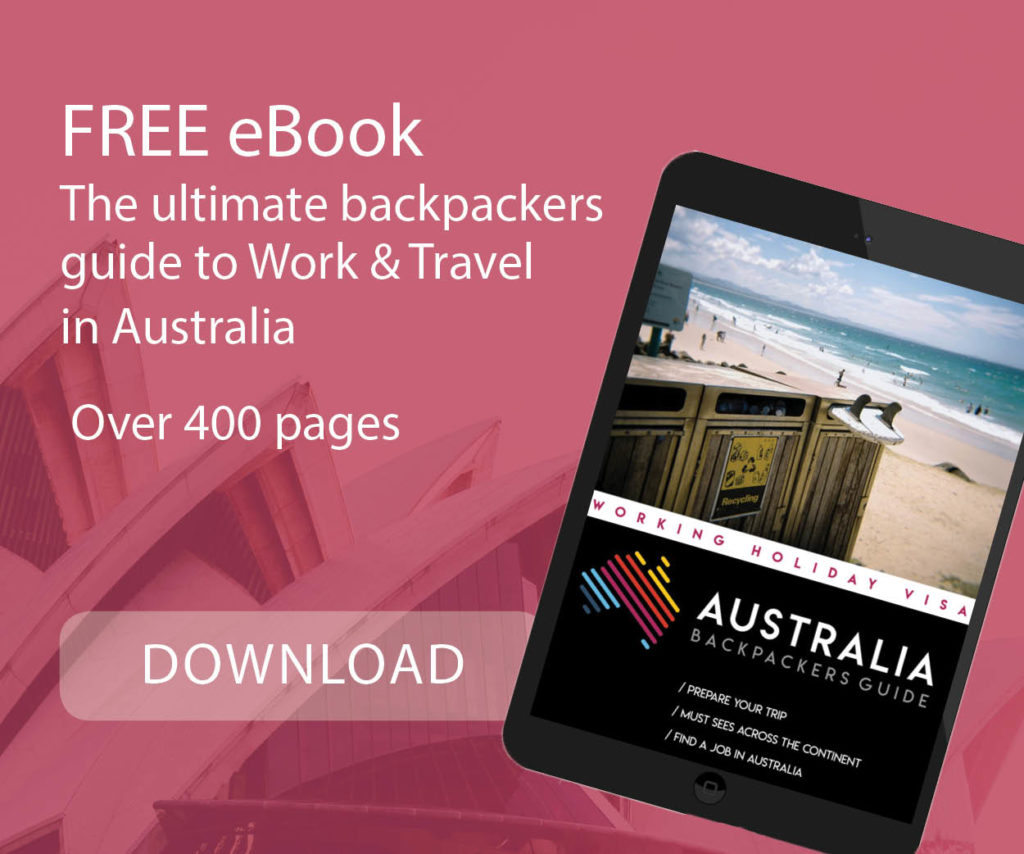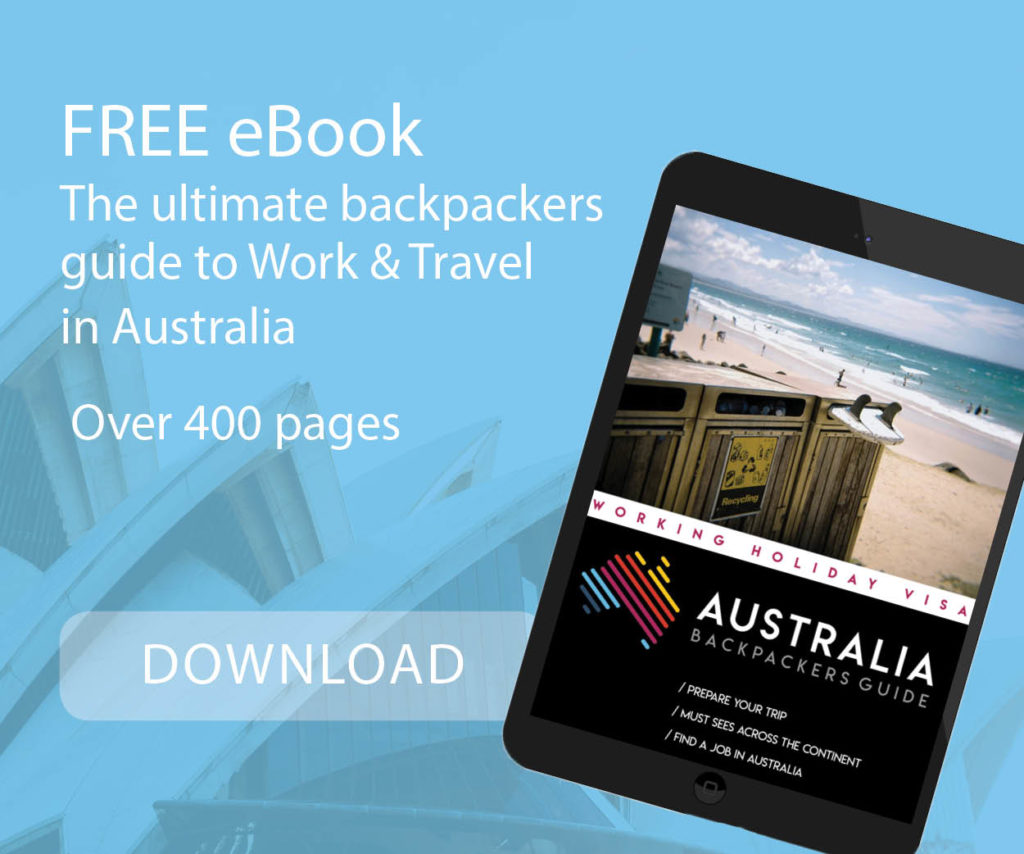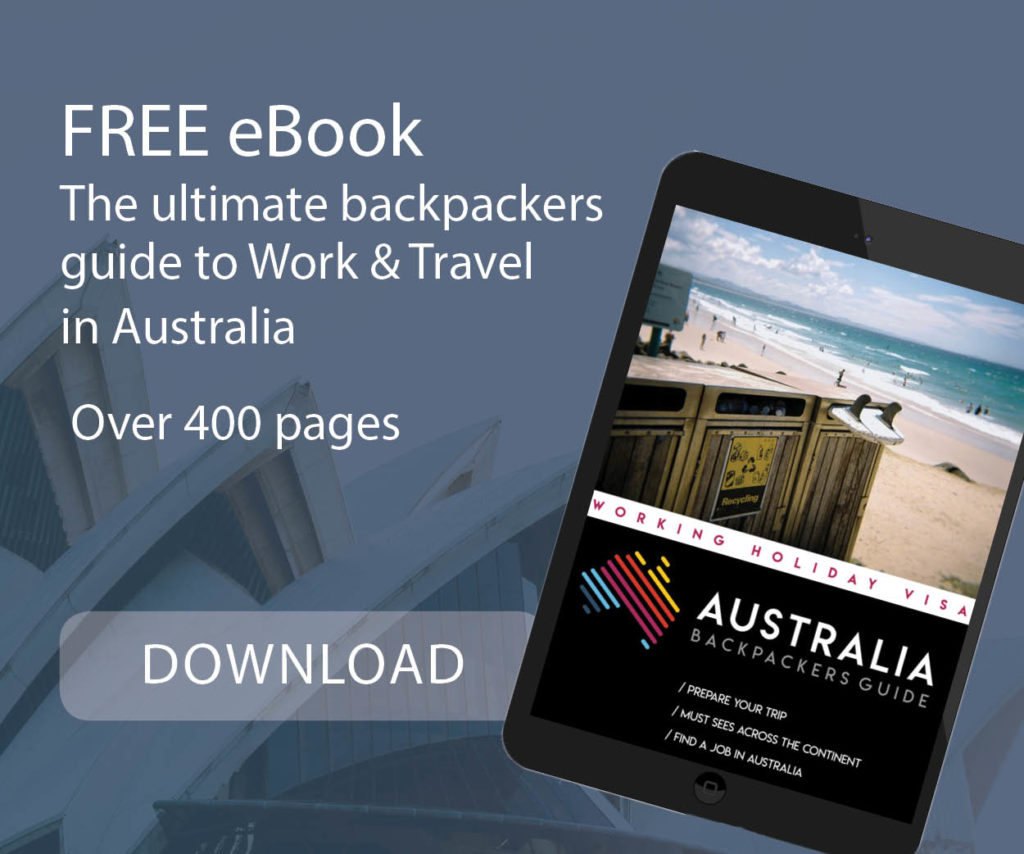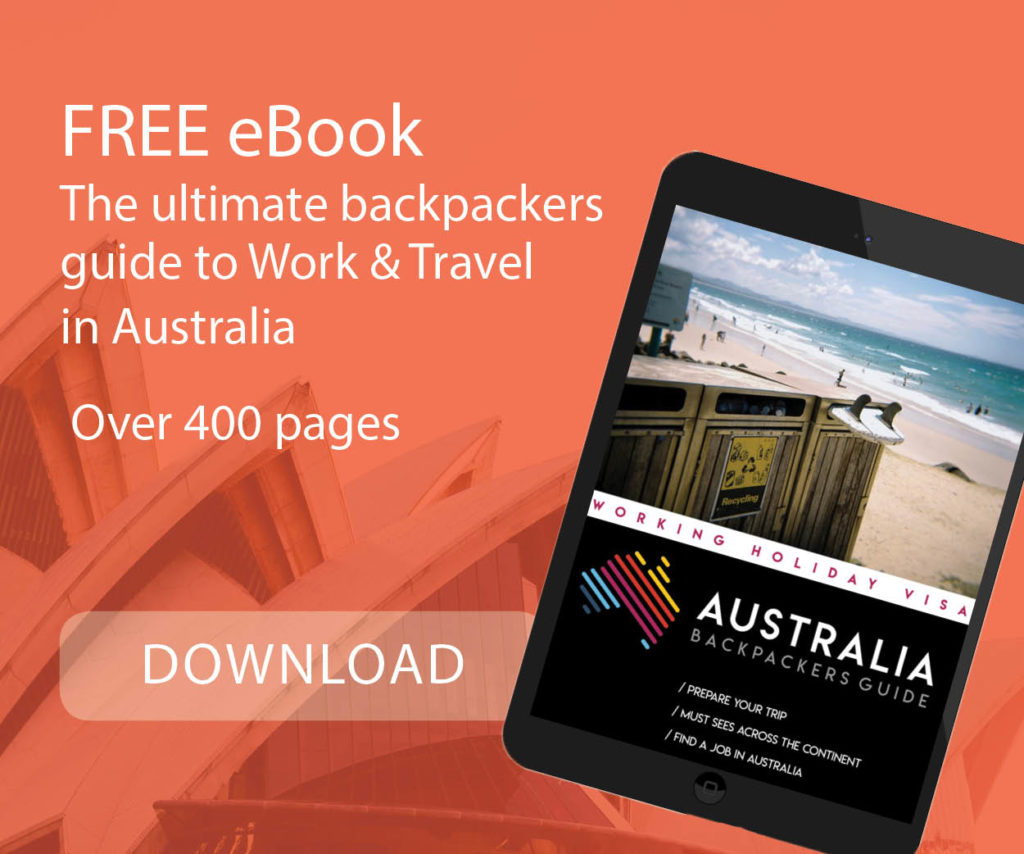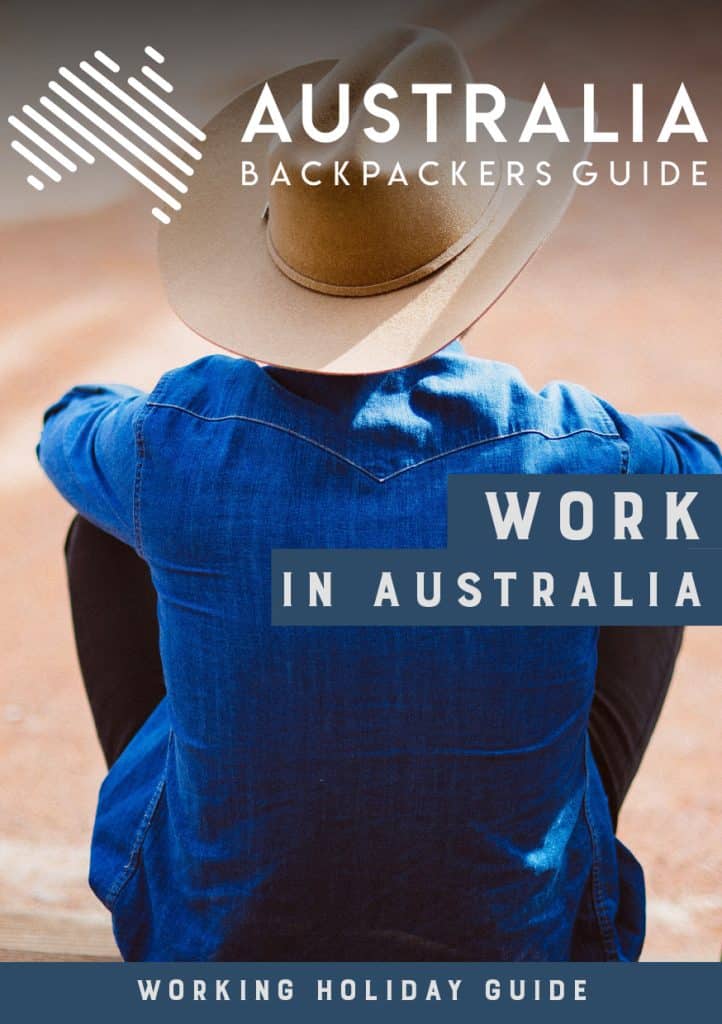Looking for a job while travelling in Australia on a Working Holiday Visa? Fruit picking and farm work are among the most popular options for backpackers. These jobs are available year-round across the country and often help you qualify for your second or third WHV.
In this guide, find everything you need to know about fruit picking jobs in Australia: where to work, when to go, how much you can earn, and how to get started.
Table of Contents
Where to Find Fruit Picking Jobs in Australia?
Australia’s vast agricultural landscape offers fruit picking jobs nationwide. Key regions include:
- Queensland: Known for bananas, avocados, and mangos.
- New South Wales: Focuses on citrus fruits, blueberries, and cherries.
- Victoria: Renowned for apples, pears, and stone fruits.
- Tasmania: Offers apple picking and berry jobs.
- South Australia: Famous for its vineyards and citrus harvests.
- Western Australia: Home to a variety of fruits including grapes and oranges.
👉 Use our Fruit Picking Calendar and Map with Contacts to find farms and the best periods.
The Fruit Picking Map
Are you looking for a job in Fruit Picking? Get free access to more than 400 farm contacts via our interactive map.
Best Time to Start?
Australia is a huge country, so the climate is not the same everywhere at the same time. Depending on the climate and the season, certain regions are better suited to growing certain types of fruit and vegetables.
☀️ Summer is better for harvesting fruits and vegetables in the south of the country and in Tasmania.
❄️ Winter can also be an opportunity to do crop maintenance in the south. Note that the north of the country (above the Tropic of Capricorn) is in its rainy season between November and March. The harvests can, therefore, be stopped and you may have several days without work or even become unemployed. Remember to check the seasons before looking for a job in an area.
Australia’s picking seasons depend on the crop and climate. Here’s a general summary:
- Spring (Sep–Nov): citrus, avocados, strawberries
- Summer (Dec–Feb): mangoes, cherries, grapes
- Autumn (Mar–May): apples, pears
- Winter (Jun–Aug): bananas (year-round), vegetables
➡️ You’ll find more jobs in summer, but more competition too — apply early or arrive just before peak season.
Harvest Calendar
Are you looking for a fruit picking job? Check out our harvest calendar with all regions and fruits to be harvested depending on the season.
The different types of jobs
Picking
Fruit picking is a key part of Australia’s agricultural industry, especially for seasonal workers and backpackers. This type of work involves harvesting fruits and vegetables directly on farms, and the exact tasks will depend on the crop, season, and region.
You might be picking apples, cherries, mangoes, bananas, or even vegetables — each job has its own pace and level of difficulty. There are two main types of picking:
🎯 Selective Picking
This involves choosing fruit based on specific criteria:
- Colour picking: Only pick ripe fruit of a certain colour
- Size picking: Only harvest fruits that meet a specific size
Farmers usually give clear examples of what they expect you to pick.
🧺 Bulk Picking
In this case, you pick most of the fruit on the tree, excluding only damaged ones. It’s faster than selective picking but can be more physically demanding.
💰 Your pay often depends on the picking method. Selective picking usually takes longer and may affect your piece rate earnings, while bulk picking can result in higher daily quantities — and potentially more income.
Packing
This involves sorting and packing fruit and vegetables. You work standing up or sitting down depending on the type of fruit or vegetables – the working conditions are more or less the same as for a factory job. The atmosphere is often noisy and the work is done on a line in a warehouse or shed-type building. This work can sometimes be paid according to performance, so it will take a few days before you are really efficient. The big disadvantage of packing is that the tasks are very monotonous, indoors and the time can go slowly…
Pruning
At the end of the season when the harvest is over, it is necessary to prune the trees before the next harvest. Pruning often takes place in late autumn or winter, so the working conditions will be a bit colder and/or wetter. You will be trained to cut the trees in order to give them the best possible conditions for regrowth. This is a job that is quite well paid.
Thinning
This involves unloading the trees before the harvest season by removing the smallest fruits to allow others to grow. The farmer will show you what size of fruit to keep. Thinning requires some patience and a good eye.

Planting
Planting will be very variable depending on the fruit or vegetable concerned. It is most often done manually, but the use of machines (tractors) is sometimes necessary for larger trees. For the planting of young trees, a shovel and pickaxe wil become your best friends! You will be planting seeds inside a shed or out in the fields. You may also need to plant larger trees, so the work will be more physical than some other types of fruit farm work.
Weeding
This job involves weeding fields or vegetable gardens. You will be pulling weeds either by hand or with the help of a spade or secateurs. Be prepared to work in difficult conditions, exposed to the sun, walking or bending down for long periods. Also, depending on the region, beware of flies sticking to your skin – a fly net will be your best friend.
Other jobs
Working on a fruit farm can also include other jobs as a Farm Hand! Indeed, this varied role could involve handling, fencing, jobs on solar farms, or even on grain farms. You may also need to manage grain lines (temperatures, delivery, transfers, etc.) on a farm where there is also fruit picking! Alternatively, on solar farms the main task would be the installation of solar panels. Generally, they are also looking for electricians, truck or forklift drivers. These jobs are also eligible for visa renewal and can be a good option if you can’t find a job fruit picking in Australia.

Types of fruits and vegetables
Each state in Australia offers a wide variety of fruit and vegetables to harvest throughout the year. Some are harvested on the ground while others are found on trees. Some are easier to pick than others. Here is a quick overview of the most picked fruits and vegetables:
Cherries
Cherries have a reputation for being easy to pick and the work is well paid. You generally collect the cherries in buckets that you then empty into crates. Picking from trees often involves the use of ladders, which can make this a more difficult form of fruit picking.
Apples
For apples, all you need are your hands, but the picking style is more selective. Once picked, you place them in a bag around your waist, before emptying it into the bin once full. After the first few days, it is common to have achey shoulders because your bag can be heavy when filled! You will often have to climb ladders, and also walk between the trees on the ground to and from the buckets where you empty your bags of fruit. Be gentle because some apples mark very easily and the farmer often checks the condition of the fruit before signing off the load.
Citrus fruits
For oranges and lemons, picking is quick once you have mastered the “twist” movement needed to pick the fruit without tearing off the skin. You will pick with bags or buckets depending on the farm, then pouring your load into bins.
Mandarins are collected using a small pruner to help cut the stem flush with the fruit. Be careful, these trees often have thorns!
Strawberries
Picking strawberries is harder on your back because they are picked form the plants which are on the ground. That said, the bike often used on these farms does help make your life easier. In some farms, you will be sat on your bike with a small table in front of youwhere you will have your empty crates that you fill as you go. You just have to pedal up and down the aisles of plants to pick your strawberries while remaining seated and without damaging your back. Ingenious right?
Mangoes and peaches
Mangoes and peaches are difficult to pick because these plants secrete an allergenic liquid that can cause reactions in some people. You may have itching, pimples or even swelling in certain places (hands, face, shins etc). Protect yourself as much as possible and work with gloves and long sleeves or trousers.
Bananas
Picking bananas is difficult because these fruits grow in bunches which can get extremely heavy. Also, if you are afraid of insects such as spiders, do not opt for work in banana picking. Indeed, it is not uncommon to come face to face with small (or large) beasts in these fields (we are thinking snakes). These fruits are collected with machetes, so again, be careful not to hurt yourself.
Vegetables
Peppers, rockmelons, onions, pumpkins and watermelons are collected from the ground and some can get very heavy. Another one which is hard on your back as the work iis mainly done while squatting or kneeling. If you already have back problems before coming to Australia, you may wan to avoid this type of farm work.
🍓 Best fruits to pick in Australia 🍓
Favour fruits that are picked at eye level because as soon as they are on the ground or a ladder is needed to pick them, the work becomes more demanding. Fruits and vegetables to pick up on the ground (strawberries and melons) are therefore not recommended because your back will suffer!
Among the best fruits to pick are cherries. Indeed, these fruits are light, not very fragile and easy to pick. Tangerines are also a very good fruit to pick. Picked either by hand or with secateurs, the work is quick. Oranges can bring in a lot of money once you get the hang of picking them. However, this fruit is heavier, so remember to beware if you have a weak back!

How to Find Fruit Picking Jobs?
Each year, thousands of travellers search for farm job across the country. To find a job in fruit picking in Australia, different methods can be used, but the best is still to multiply these methods to give yourself the best chance.
⚠️ Useful tip
It’s essential to find out in advance about the harvest seasons in each region. This will enable you to plan your trip and arrive at the right time to give yourself the best chance of finding a job.
The Backpackers Guide – Farm contacts
There are different ways to approach employers, either by phone or by visiting farmers directly. The Australia Backpackers Guide gives you access to a list of farms across Australia. Furthermore, you will also find some important information about the conditions, seasons and the different fruits (start of the harvest season, crop losses due to weather conditions etc).
It also gives advice on how to improve your work management. Although fruit picking is not a complicated job, there are some techniques that can help you be more effective. This is particularly important because many companies do not pay their employees per hour, but for performance. In the guide, you will also find a harvest calendar, in which you can see exactly which regions are harvesting in which season and when.
Specialised agencies
In some cities, farmers work with independent recruiters to fill jobs. This is particularly the case in remote regions where there are not necessarily temporary employment agencies to bridge the gap between workers and employers. If you ask on the farms, the owners will often tell you: “For recruitment, we go through …”. If this happens multiple times, contact this agent directly to find a job in this area as they will be clued up on vacancies and able to get you started as soon as possible. These contractors take care of hiring workers, managing payrolls and the various administrative procedures (filling out the hiring form, retirement pension, etc.). Following abuse of the system by some people, some states have recently introduced regulations for contractors. In South Australia, Queensland, or even Victoria, contractors must now purchase a license.
Temporary employment agencies are also very present in the cities. Among them are the two most famous backpackers agencies Madec and Skill Hire. Madec has offices in several states and links to many employers maing them a useful resource.
Useful websites
Workforce Australia
The Australian government has created WorkForce Australia, with a section dedicated to fruit picking. Here, you’ll find a list of job offers in harvesting by state. You can then click on the vacancies that interest you and apply directly online.
Other useful sites
Here are some websites that can be useful if you are looking for a job.
- The yellow pages: in the search bar, enter the region where you are looking for work. EG enter “orchard, fruit and berry growers, vegetable growers, wineries …”.
- Gumtree: be responsive but beware, if asked to pay a deposit, ignore them!
- Other websites:
Jobaroo
Harvesttrail
Workstay
Recruitflex
Wineindustryjobs
Door to door
Door-to-door canvassing is one of the most effective ways of finding a job. Farmers will appreciate meeting you before giving you a job. Especially as in Australia (in agriculture at least), job interviews aren’t exactly a dime a dozen… Contact will also be easier than by telephone. If you visit the farms during working hours (preferably in the morning or early afternoon), you’ll have a better chance of finding someone on the property. If not, remember to prepare a small note (surname, first name, reason for your visit, telephone number, etc.) to slip into the letterbox. However, you should be aware that going door-to-door in these sometimes isolated farming areas can be time-consuming and involve financial costs, which can sometimes be considerable (fuel consumption). What’s more, this type of search is only feasible if you have your own vehicle. Farming areas are not well served, so it’s difficult to use public transport.
Word of mouth
Don’t hesitate to talk to people you meet. In the pub, on the beach, in a park, during a visit… talk to the locals. They can be invaluable in your job search. Australians are altruistic and won’t hesitate to lend you a hand if they can. Talk to other backpackers you meet in hostels, tourist attractions and supermarkets. They’ll be able to share their job tips with you or give you some good advice to make your search easier.
Local newspapers and notice boards
This is something you don’t necessarily think about, but it can be very useful. Take a look at the notice boards in supermarkets when you go shopping, or in youth hostels and local pubs. Reading newspapers (local, regional, city…) every day can also be a good option.
Backpackers Hostels & Working Hostels
If you’re actively looking for a job and don’t have a place to stay, we advise you to book a stay in a youth hostel or working hostel. These hotels, very often located in agricultural areas, offer to find their guests work. They work with local employers. Many are located in Mildura and Shepparton (Victoria) or Bundaberg (Queensland).
Beware of scams in these sectors! Find out well in advance about the reputation of the hotel and/or farm. Ask other backpackers for information and look for reviews on the Internet or social networks. Be aware that in some accommodation, you will be put on a waiting list (sometimes a long one) and that there is no promise of employment. What’s more, if you are not a guest of the hotel, your chances of finding a job are very slim, if not virtually non-existent.
Wages, hours and working conditions
Wages vary depending on the farm and the type of job. They are calculated on a weekly basis, paid by the hour or according to output. Employee entitlements vary depending on the type of employment: full-time, part-time or casual. You can be paid hourly or by the piece rate (per bin, bucket, etc.).
Employers generally pay pickers every weekend or every fortnight. Payments are usually made by bank transfer, but can also be made by cheque, although rarely in cash. In all cases, keep your payslip safe, or ask for it if you don’t get one automatically.
Hourly pay
All employees working in Australia are entitled to a minimum wage. This is the minimum amount an employee needs to be paid for the work that they’re doing. The minimum wage is payable before tax is deducted (known as gross pay).
For most employees, minimum wages are set by the award that applies to them.
Award and Collective agreements
For most employees, an award or registered agreement outlines minimum pay rates and conditions of employment. They may vary depending on your age and the type of contract you are employed under (full time, part time or casual). Casual workers are not assured a fixed number of working hours each week. Instead of receiving benefits like annual leave, sick leave, notice of termination, or redundancy payments, they receive a casual loading. Finally, the hourly rate is higher if you work at night (after 6pm in general) or on public holidays (which varies from state to state).
💡 Good to know
All minimum wages by profession (award) can be found on the FairWork website.
The national minimum wage is $915.90 based on a week of 38 ordinary hours ($24.10 per hour) (to be increased in July 2025). This is the base rate for adult employees in the national system who are award/agreement free.
Payment based on performance
Depending on the fruit or vegetable, output may be calculated differently: by the number of buckets, bins, baskets, trays or weight. Your boss will then tell you a given rate for a given container (e.g. $42 for a 400kg bin). It’s all about speed, and the more you fill, the more you earn! Average pay varies between AU$ 40 and AU$ 80/bin, depending on the fruit.
Collective agreements regulate performance-related pay. Make sure you have the words “piece rate” noted in your contract with your employer. For all collective agreements and the Award to which you belong, you must be paid at least 15% more than the minimum wage.
Workers paid on the basis of performance have been guaranteed a minimum hourly wage. This change applies to full-time, part-time and casual employees. This follows a decision by Fair Work Australia to impose a minimum wage for all performance-based workers in order to put an end to the abuses practised by some farmers.
Working hours
When the harvest season comes around, it’s common for bosses to ask their employees to be extremely productive. This is perfectly normal. You may be asked to work 6 days a week for 10 hours a day, sometimes more, sometimes less.
Often, because of the heat, you’ll start early in the morning. On rare occasions, some farmers will even let you choose your own working hours. If you want to arrive an hour later in the morning or leave an hour earlier at the end of the day, that’s possible, as is the case if you don’t want to work at the weekend. This option is a disadvantage for you because you won’t be earning any money. We advise you to work as much as you can to put as much money aside as possible so that you can continue your road trip in the best possible conditions and as fast as possible as these will all count towards your days for your renewed visa. All the more so when you consider that agricultural regions are often far from tourist areas. Just remember that it’s a ‘blessing in disguise’ over a given period, and that you’ll make up for it later.
Working conditions
Working in agriculture requires you to be in good physical condition. Don’t panic if you’re not a top athlete, you can still work in fruit picking. Women are also you’re just as capable of working in this field as men. Every traveller has a chance of finding a job in fruit picking, the hard part is keeping it. With a little willpower and courage, you should be able to do it!
It’s hard, repetitive work. You will be standing, kneeling or bending over for several hours. You’ll suffer from muscular aches all over your body (especially in the first few days) and intense fatigue. This is normal, given the effort your body will be putting in every day.
Work clothes
You’ll need gumboots, a hat, a pair of gloves, trousers and preferably long-sleeved T-shirts to protect you from insects, tree scratches and sunburn. A hat is essential in summer, as it covers your neck, forehead and face. You can also take sun cream and sunglasses with you. A rain jacket can also be useful (sometimes they are provided by your employers), as working in the rain is not at all pleasant. Remember to take plenty of water with you (several litres a day) as well as a fly net (and repellent). If you’ve come to Australia without any equipment, we recommend cheap shops such as Kmart or BigW to kit yourself out. Alternatively, try second-hand shops, where you’ll find everything you need without breaking the bank (Vinnies or Salvos).
Fairwork and your rights
Even as a foreign worker, you have rights. Don’t let yourself be exploited by malicious farmers and make sure you’re paid the legal minimum wage. Before you leave your farm, make sure you have all your wages as it will be more difficult to manage this from a distance. In addition, always ask for a payslip (if you are not given one with every pay). On the other hand, if your employer refuses to pay you even after discussion, don’t hesitate to contact Fairwork. This is a government body responsible for relations and conflicts in the world of work. It will be able to assist you in your efforts to obtain redress.
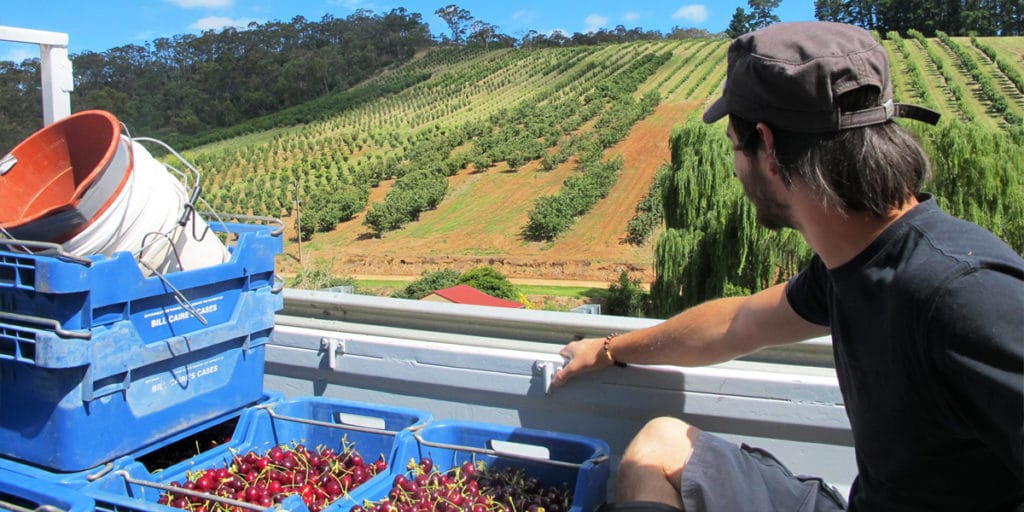
Farm life
Accommodation
It’s generally easier to find a job if you have your own vehicle and accommodation. The farmer will be able to offer you accommodation on his property. Most of the time, caravans, tents, mobile homes or even rooms will be made available to pickers. You can live there throughout the season, often for very affordable rent (e.g. $30/week). Cooking facilities, showers and toilets, as well as electrical appliances such as washing machines and tumble dryers, may or may not be available free of charge. These facilities are often rudimentary, bearing in mind that you are working in agriculture. Don’t expect great luxury. If this is not the case, you will often find caravan parks and backpacker hotels in the area.
Food and travel
Your meals will usually be at your own expense when you’re working. So you’ll have to shop and cook (at least). You’ll probably be in an isolated area, so your choice of shops will be limited. Very often, you’ll find just one supermarket in the town, or at best a small supermarket. Don’t hesitate to ask people on the farm where they get their supplies, especially locals. Some farms organise weekly shuttles to take their employees to the local supermarket.
As far as getting around is concerned, if your accommodation is several kilometres from the farm, you’ll need to get organised. In most cases, there will be no public transport, so car pooling is a good alternative. Some farms also provide shuttle services (for a fee or not) between your accommodation and the farm. They’ll be sure to let you know.
The fact that you are isolated is a considerable advantage, as you will spend much less money than if you were on the road. Everything you earn during the season goes into your bank account. It’s a great way to save money!
Working with others and employers
Working abroad allows you to meet the locals and integrate into local life. The good thing about fruit picking is that you can work in every Australian state. This will allow you to meet people from all over the country.
You’ll be working with backpackers from all over the world, and that’s a real human experience. Living together will enable you to learn things about yourself and others that you didn’t know before. That’s the magic of travelling and meeting people. You may come across some difficult employers… If this is the case, discuss it. The situation can certainly be resolved. And if not, don’t persist and stress yourself out too much over it either… Don’t hesitate to change farms if you don’t feel comfortable – you don’t have to stay on the same farm the whole time.
Renewing your Working Holiday Visa
Second Year WHV (Subclass 417 or 462)
If you’re on a Working Holiday Visa, you can extend your stay in Australia for a second year, provided you meet certain conditions. To qualify, you must complete at least 88 days (3 months) of specified regional work in an eligible job and location approved by the Australian Government.
🥭 Farm work is one of the most common and accessible ways to meet this requirement.
You can apply online for your second visa without leaving Australia, up to 28 days before your first WHV expires — though it’s best to apply earlier to avoid delays.
💰 Cost: $650 AUD (valid for 12 months)
📌 You must apply before the end of the year in which you turn 35, and you cannot have dependent children (same as the first visa).
You can find more information here: Eligible regions to extend your Working Holiday Visa
Third Year WHV
To apply for a third Working Holiday visa, you’ll need to complete 179 days (6 months) of specified work during your second WHV year. The jobs and regions remain the same as for the second-year visa.
💰 Cost: $650 AUD for 12 months
📄 All work must be paid and comply with Australian employment laws and award wages.
Special Update for UK Passport Holders
Thanks to the UK–Australia Free Trade Agreement, UK citizens no longer need to complete farm work or regional jobs to renew their WHV.
✅ As of 1 July 2024, UK passport holders can apply for a second and third WHV without meeting the work requirement.
Frequently Asked Questions
Having a vehicle helps when looking for farm work, but it is not essential. It makes it easier to go from farm to farm, you can have a look around and choose the farm you like best. If you can sleep in your car, it’s even better, as farmers appreciate that you have your “own home.”
Cherries have the reputation of being easy to pick and to be well paid, on the contrary tomatoes or onions aren’t. That said, it all depends on your employer, your efficiency and your motivation (if you are paid by performance). It’s difficult to generalise because wages vary from farm to farm and can also change depending on the season (good or bad harvest).
There is not really a best place or town for Fruit Picking. On the other hand, there are agricultural regions that are better known because they employ more workers throughout the year. The disadvantage is that these areas are often packed with backpackers. For example, you’ll hear about Mildura, Shepparton, or Bundaberg. In these regions, wages are often lower and scams more numerous. The best way to find a good Fruit Picking job is probably to go away from the coast, and avoid too “popular” areas. Workers are more sought after in these regions, but then again, there is also less work.
Before starting a job, make sure to check that the kind of work and the region are eligible for your Second Year Visa.
Since July 2024, UK passport holders are no longer required to do some regional work (picking, waitressing, fishing etc) to renew their WHV.
Yes, fruit picking can be physically demanding. It often involves working outdoors in various weather conditions, standing for long periods, and repeatedly bending or climbing ladders.
Employment duration can vary from a few weeks to several months, depending on the harvest season and your availability.
Updated on 17/04/2025





